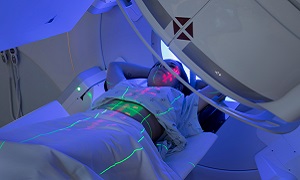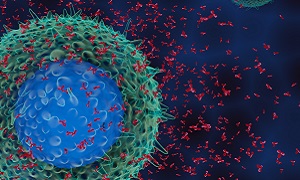Sarcoma
Sarcoma is a type of cancer that may occur in several different parts of your body. There are over 70 different types of sarcoma, such as angiosarcoma, chondrosarcoma, Ewing sarcoma, etc.
Soft tissue sarcoma affects tissues that support or connects the systems of your body. Soft tissue might appear in fat, muscle, deep skin tissues, blood vessels, tendons, cartilages, and ligaments. Meanwhile, bone sarcoma or osteosarcoma is a type of bone cancer.
Sarcoma is rare in adults, and according to the American Society of Clinical Oncology, it accounts for one percent of all cancers among adults. This cancer is more common among children and accounts for 15 percent of all childhood cancers.
Signs & symptoms
If you have sarcoma, you may show the following signs and symptoms:
- Bone pain
- A lump felt through the skin that may be painful
- Weight loss
- A broken bone occurring unexpectedly, such as with a minor injury or without any injury
- Abdominal pain
Causes & risk factors
In most cases, the exact causes of sarcoma are unknown. They generally occur sporadically, with little or no family history.
However, according to researchers, there are a few possible risk factors.
- High doses of radiation: If you have previously undergone radiation treatment for cancer, it can increase the risk of developing a soft tissue sarcoma later.
- Exposure to chemicals: Exposure to certain chemicals such as vinyl chloride, dioxins, and phenoxyacetic herbicides can also increase the risk, though there is more evidence required to confirm this.
- Hereditary conditions: Hereditary factors might play a role as well. People suffering from syndromes such as neurofibromatosis and tuberous sclerosis generally appear to have a higher risk of sarcoma.
- Human herpesvirus 8: Kaposi’s sarcoma is the only type of soft tissue sarcoma having a clearly known and defined cause.
Diagnosis
Your doctor is likely going to recommend multiple tests and procedures in order to diagnose the condition as well as determine its stage. Some of these tests and procedures include:
A physical exam

Your doctor is likely going to perform a physical exam to understand your symptoms properly. This will allow him/her to look for other clues that might help with the diagnosis.
Imaging tests
Depending on your condition, different imaging tests might be right for you. Tests such as X-rays are better for identifying bone problems. Other tests like MRI, are better for identifying connective tissue problems. Other imaging tests that your doctor might need to use can include CT, ultrasound, bone scans, and positron emission tomography (PET) scans.
Biopsy

A biopsy is a procedure where a piece of the suspicious tissue is removed for lab testing. Lab tests can help to determine whether the cells are cancerous as well as what kind of cancer they represent. Tests can also reveal information that can help in choosing the most appropriate treatments.
How a biopsy sample is collected is going to depend on your particular situation. It might be removed with a needle being passed through your skin or in some cases; it could be cut during an operation. A biopsy can also be done at the same time as surgery to remove cancer.
Once your doctor is able to confirm the diagnosis, he/she might recommend additional tests in order to find signs that cancer has spread.
Treatments
The most common treatment for sarcoma is generally surgery, for removing cancer. Depending on your condition, other treatments might also be used before or after the surgery. Which type of treatment is best for you depends on several factors, such as the type of sarcoma, its location, how aggressive the cells are, and whether the cancer has spread.
Your doctor might recommend one or more of the following treatment methods:
Surgery
The surgery is performed with the goal to remove all of the cancer cells. It can be sometimes necessary to even amputate an arm or leg to remove all of the cancer cells. However, surgeons try to preserve limb function as much as possible. In some cases, they are able to remove all of the cells without hurting any important structures such as your nerves or organs.
Chemo
Chemo is another popular treatment for cancer, which uses chemicals to kill the cancer cells. There are certain types of sarcoma, which are generally more likely to respond to chemo treatment than others.
Radiation Treatment
Targeted Drug Treatment
Immuno Treatment
Immuno treatment is a drug treatment that makes use of your body’s immune system to fight your cancer. Your body’s disease-fighting immune system might not attack your cancer since the cancer cells produce proteins that are able to blind the cells of the immune system cells. Immuno drugs work by interfering with that process.
Ablation Treatment
Ablation treatments are able to destroy cancer cells by applying electricity to heat the cells, or very cold liquid to freeze the cells. This treatment might also use high-frequency ultrasound waves to damage the cells.






